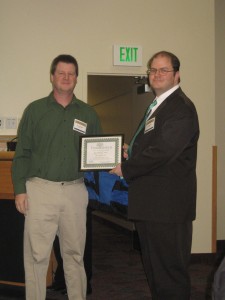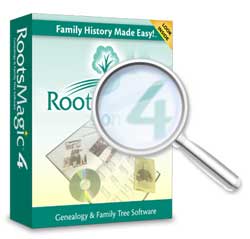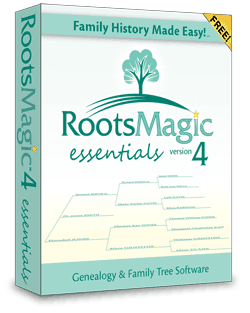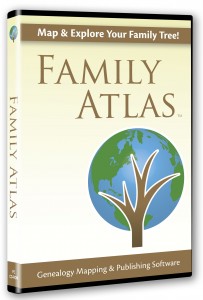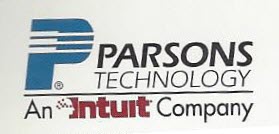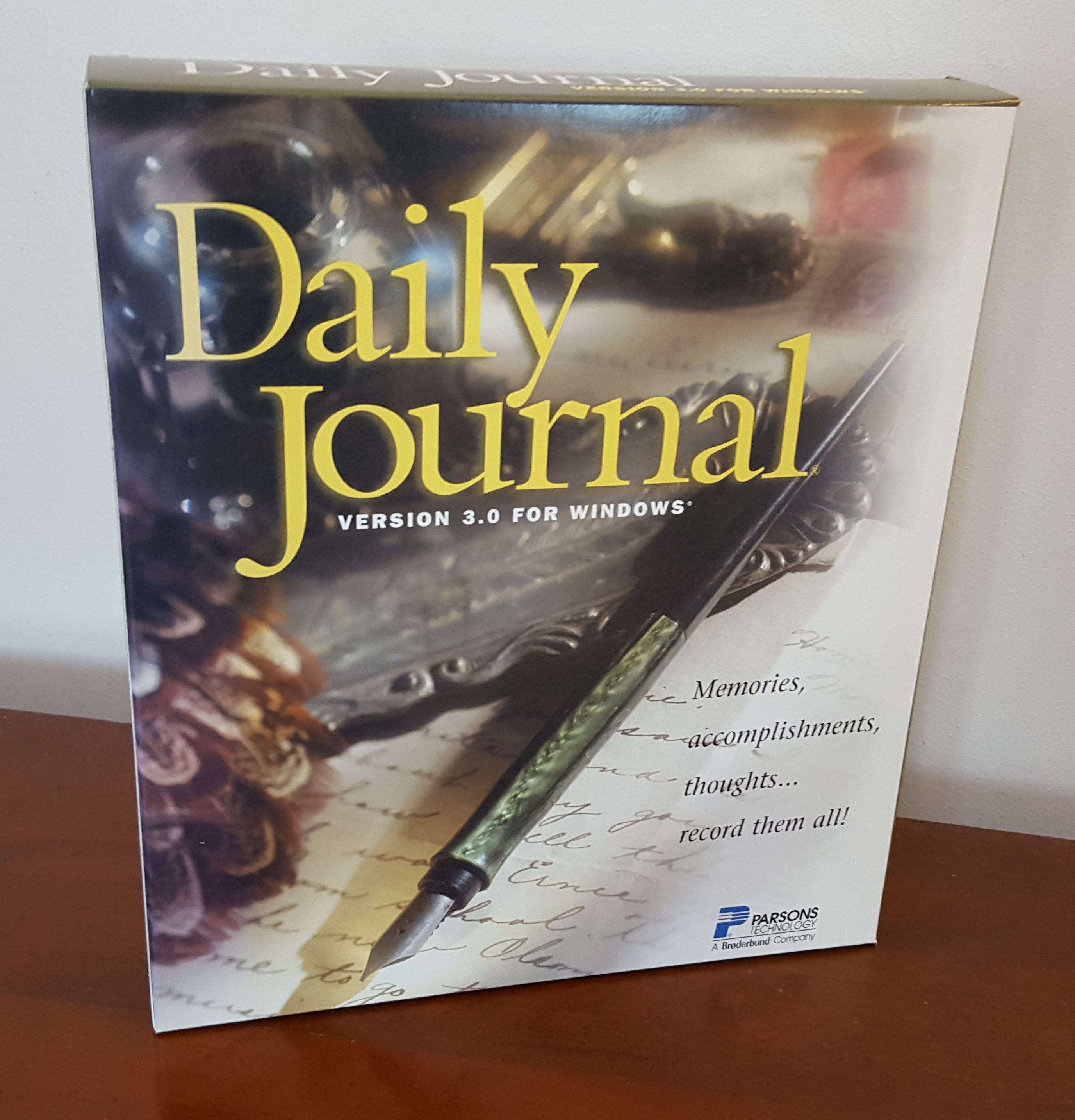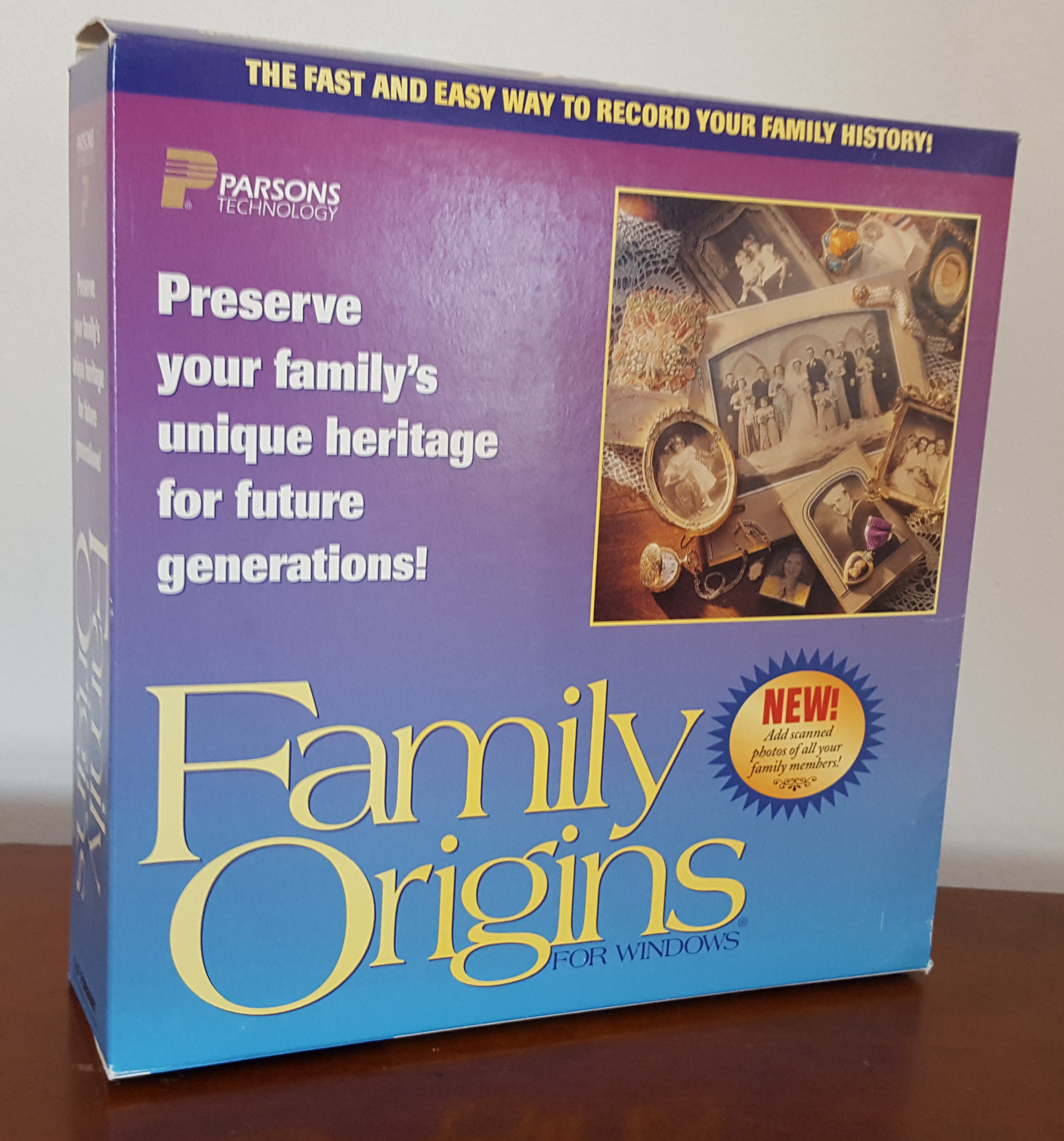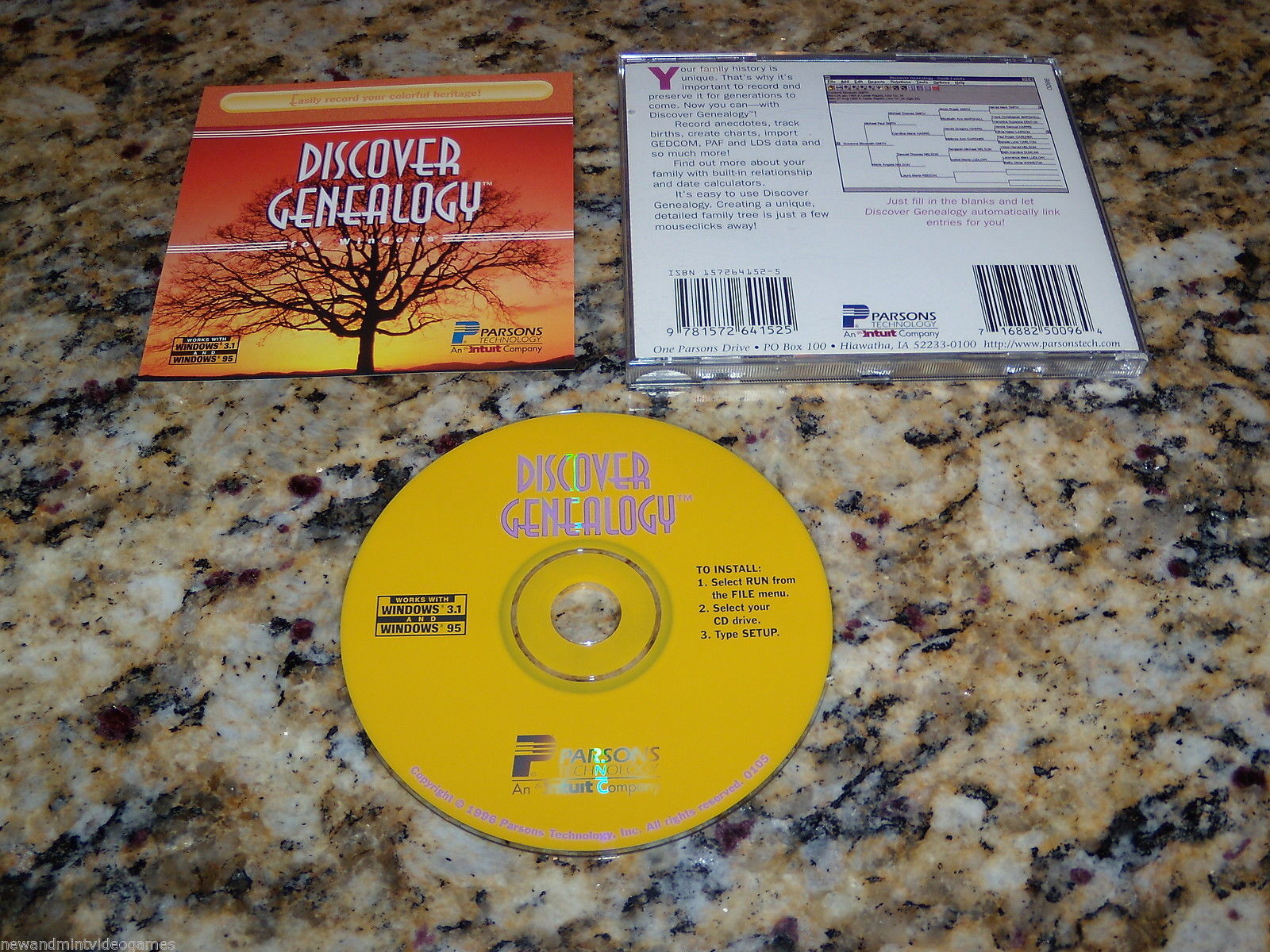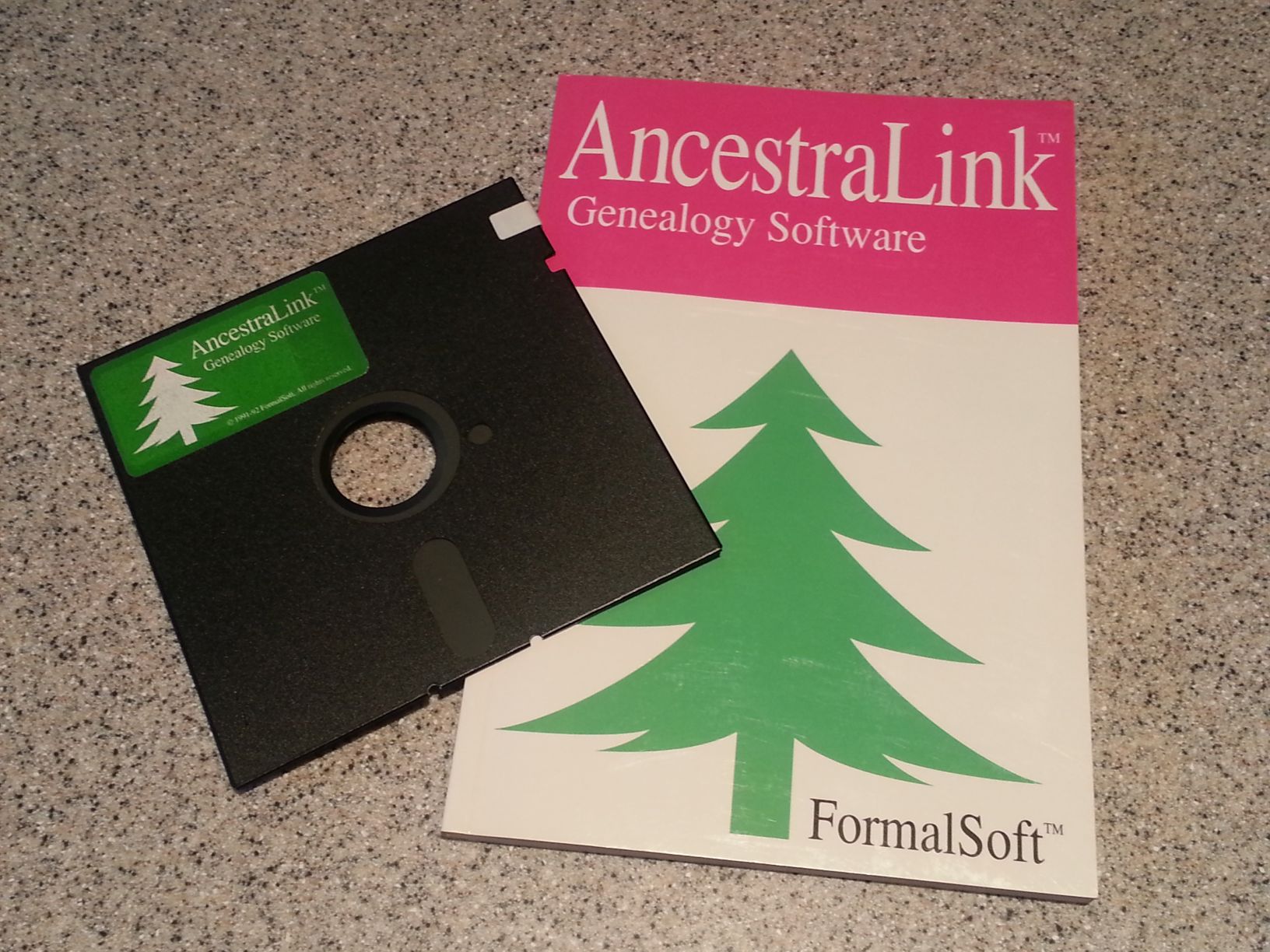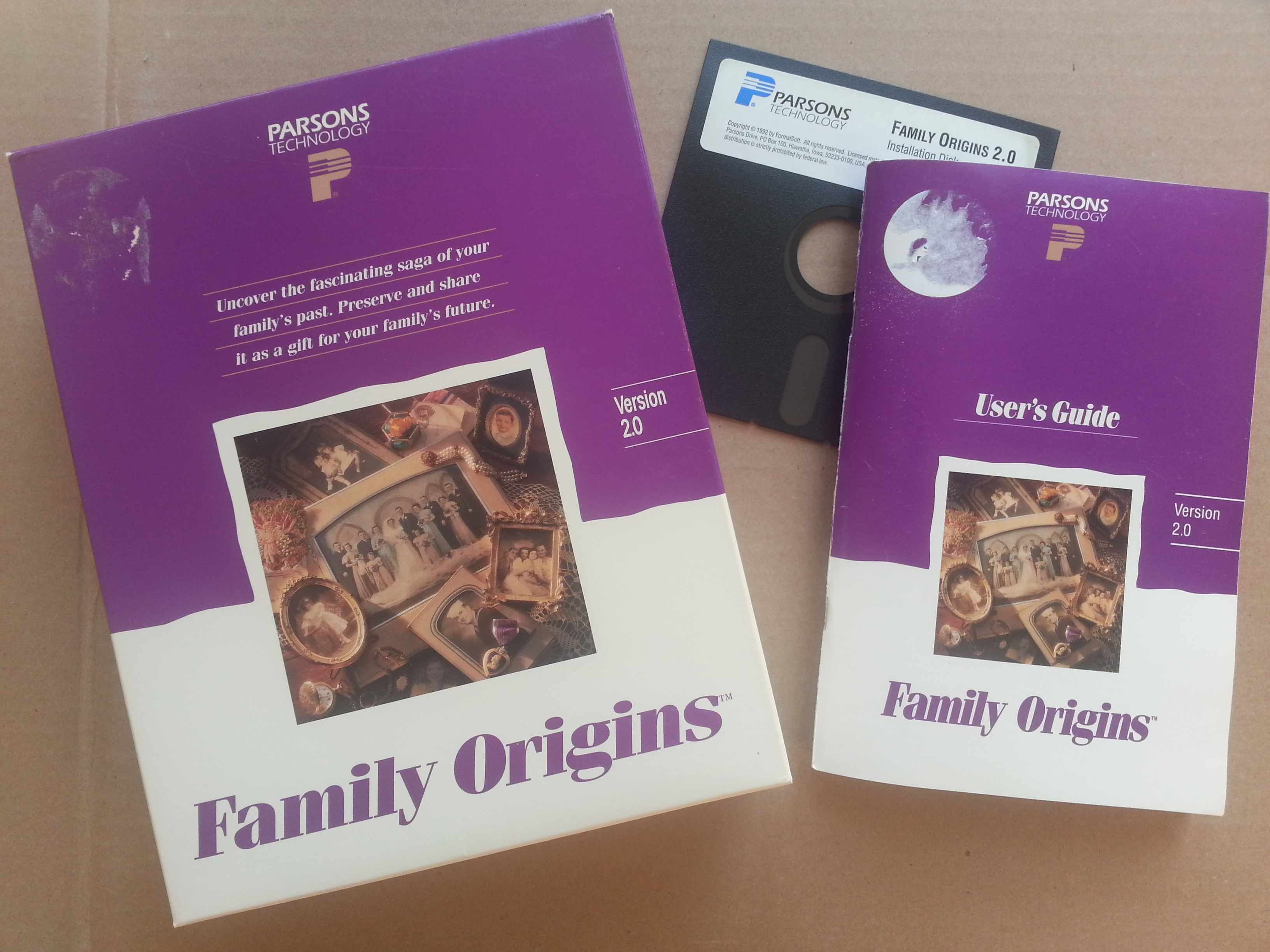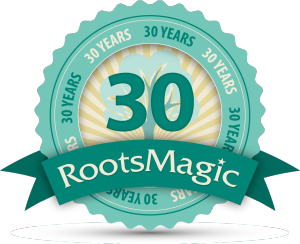
NOTE: This is Part 8 of our ongoing series documenting the history of our company. If you’re just joining us, be sure to read Part 1, Part 2, Part 3, Part 4, Part 5, Part 6, and Part 7.
Shortly after I finished writing Family Origins 10, I realized that A&E wasn’t really doing anything to promote the program. When I would get my royalty check, it was obvious that the copies I was buying and reselling greatly outnumbered the copies they were selling directly to customers. Royalty payments were dwindling, and it was getting tougher to make ends meet. The company just wasn’t making enough to keep our family going. I even went out and applied for some other jobs to try and help out, but the one that was a perfect fit said I was “overqualified”.
I decided to write another program to help supplement our income. Rather than write another family tree program, I decided to write a program to help users organize their records: documents, certificates, photographs, addresses, etc. But rather than just storing information about these records, any record could be “linked” with any other record. It was a very powerful idea, with a very confusing interface, and when I brought in some early testers, I realized that this would be a tough sell. I spent a lot of time trying to explain my thinking behind the program and realized that if I had to explain this much to my testers, there was no way I was going to make this understandable to the general market.
The further we got into the testing, the more discouraged I became. I knew that even if I released this new program, we could never sell enough copies to be worth it. But I didn’t want to waste my time writing another Family Origins upgrade since I knew it wouldn’t get marketed as it deserved. Then one day as I was looking through my contract trying to figure out a way to get Family Origins back, I realized that the one thing the contract didn’t include was a non-compete clause. The contract did require me to license any upgrade to the Family Origins program to them, but didn’t prohibit me from writing a totally new genealogy program.
A lawyer friend advised me that while I could do this, I needed to make sure there was no connection between Family Origins and this new program. So I unplugged my computer with all my source code, bought a new computer, and started writing a new genealogy program completely from scratch. I knew this was a daunting task, and would probably take a couple of years to finish, but I felt energized by the decision. I plowed into my programming, determined to make this new program even better than Family Origins. I wanted it to have a similar look and feel to Family Origins since I knew its best chance for success was if I could switch over all those existing Family Origins users.
I kept this decision a secret from all but my family. A couple of years after we released Family Origins 10, A&E called and asked me to do a version 11 upgrade. I declined, saying that I didn’t want to spend that much time on a program I knew they wouldn’t promote. They suggested I make a few minor enhancements, and they could call that version 11, but that just made me madder.
As I continued to work on the new program, I found the hardest part was coming up with a new name. I wanted a name that would be memorable, but more importantly, the .com domain name needed to be available. My first stipulation was that I didn’t want the word “family” in the name since most of the existing genealogy programs had family in the name, and I wanted something more unique.
When I asked my family for suggestions, I realized that while teenagers weren’t that helpful with real names, they were great for gag names. Their suggestions included “Frankancestor”, “Genealogy Blaster”, and “PediFile”. I almost bit on that last one until I said it out loud. As we came up with names that I might consider, I registered the domain name just in case. At one point I probably had 10 or 12 domain names registered, but finally decided on “RootsMate”.
In May 2002, we unveiled RootsMate at the NGS conference in Milwaukee, Wisconsin. The program was still in development, but I wanted to start getting the word out. Dick Eastman wrote about RootsMate in the May 20, 2002, issue of his blog.
http://www.eogn.com/archives/news0220.htm
As the year progressed, so did the program and testing. Then in September, one of our Australian testers casually asked how committed we were to the name “RootsMate”. When he explained why he was asking, I emailed another of our Australian testers and asked him his thoughts on the name. He responded, “Well, I wasn’t going to say anything, but when my wife saw the name at the top of the beta website, she asked what kind of website I was visiting”. I asked whether the problem was the word “root” itself, or just in combination with “mate”. As an example, I said what if “root” was used with a different word, like “magic”. To this day I don’t know why I used the word “magic” other than it started with the same 2 letters. He not only said it would work ok, but that he really liked the name RootsMagic. When I ran it past our other testers and my family, they all agreed.
And despite all the work and votes our testers went through, my announcement was nothing more than a reply to another post on the ROOTSMATE users list. I guess I didn’t feel it was a big enough decision to warrant its own post.
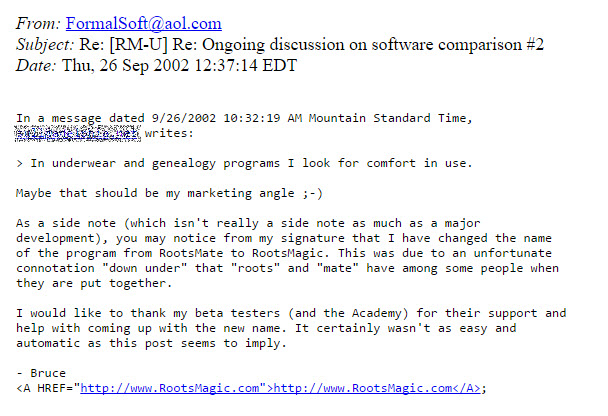
My plan had been to release RootsMagic in time for the holiday season since we were completely out of money and our credit cards were maxed out. Family Origins users were hounding us wanting to get RootsMagic for Christmas, but we had to tell them it wouldn’t be ready until January. This was bad news all around… they wanted it now, and we needed the income to keep the company alive. Then “Charlie” (a long time Family Origins and RootsMagic user) made the suggestion that solved all our problems.

So in late November we started selling gift certificates, redeemable for a copy of RootsMagic when it was released. On January 31st, our CDs were delivered, but of course, that was a Friday at 5 pm. We spent the weekend packaging orders, and on Monday, February 3rd, 2003, we shipped the first RootsMagic orders. Since we had the addresses of everyone that had ordered a certificate, we sent out the orders without requiring them to return the certificate. NOTE: if any of those original users still has a copy of that certificate laying around, I would LOVE to get a scanned copy of it to add to this history.
The day we announced the release of RootsMagic, I received a telephone call from A&E, who still had the rights to our Family Origins. After congratulating us on the release, they asked if I knew that our contract gave them the rights to our RootsMagic program as well. I pointed out that RootsMagic was written entirely from scratch, and that if they wanted to pursue that, they better make sure their lawyers looked over that contract with a fine tooth comb first. Apparently, their lawyers saw the same thing mine did, because I never heard from them again on the subject.
While finally getting RootsMagic out the door was a reason to celebrate, it was also a little scary. Our little company was now back in the software publishing business, and the need to do sales, marketing and support were once again our responsibility.
NEXT: A Publishing Error

